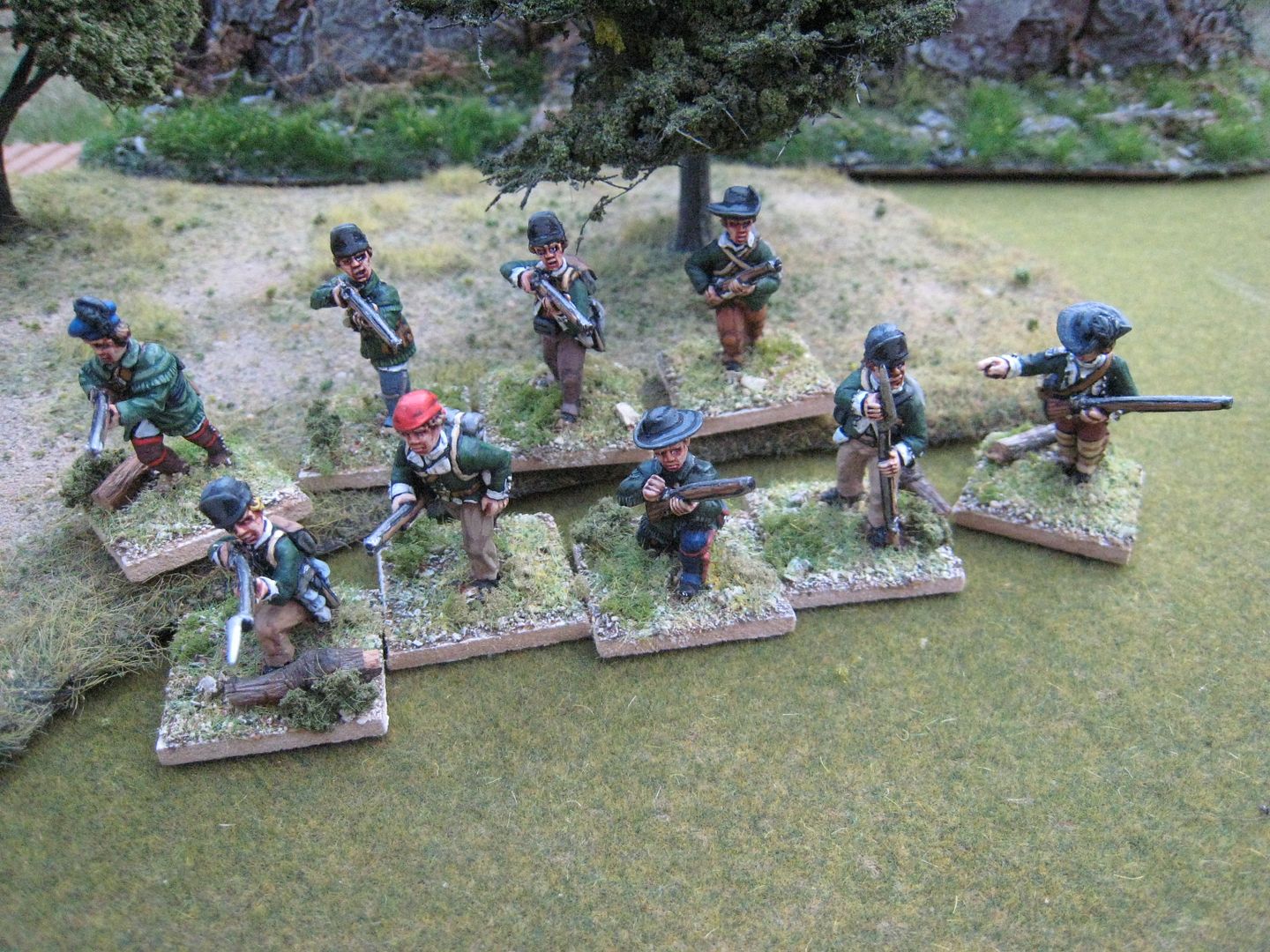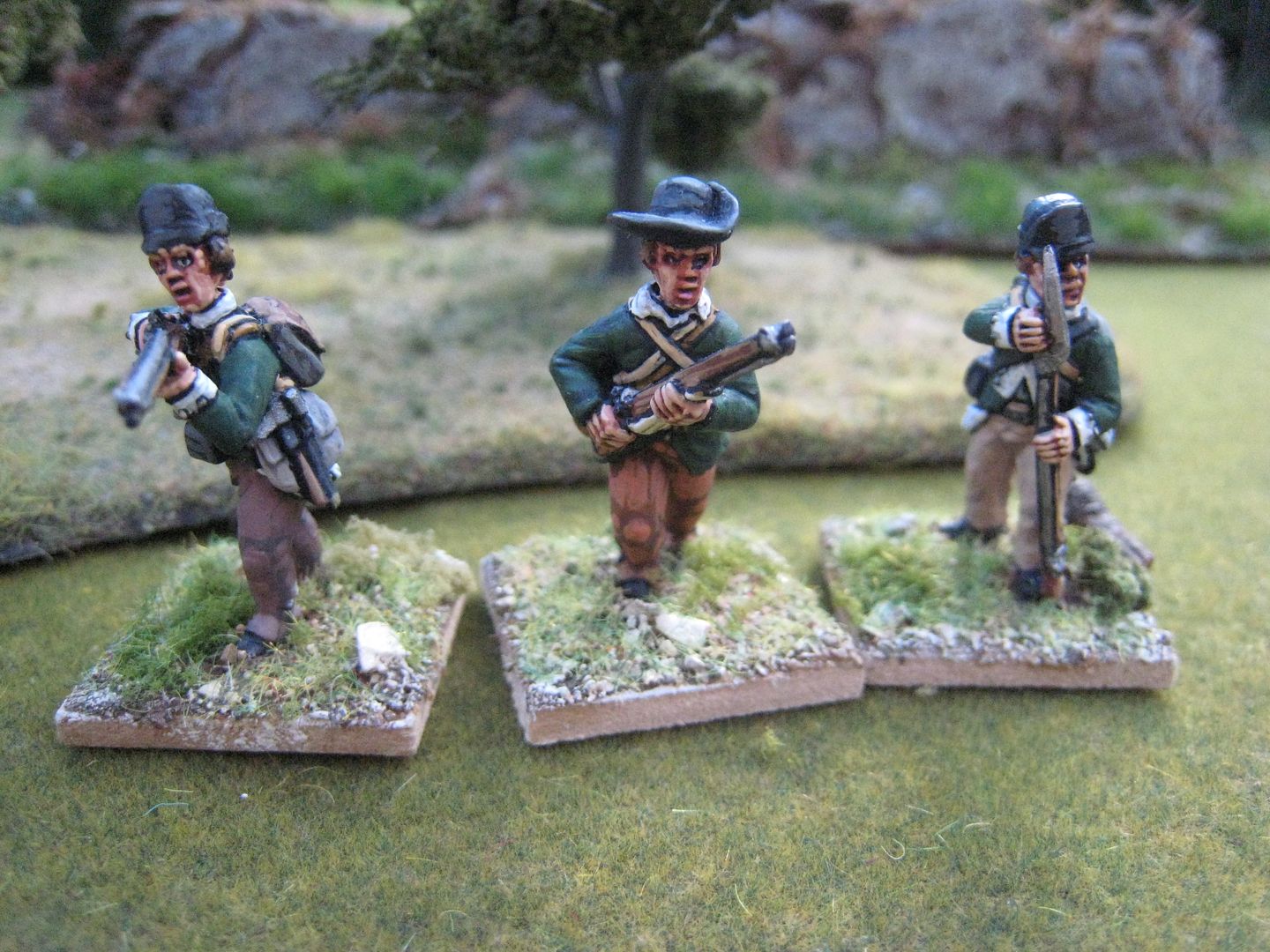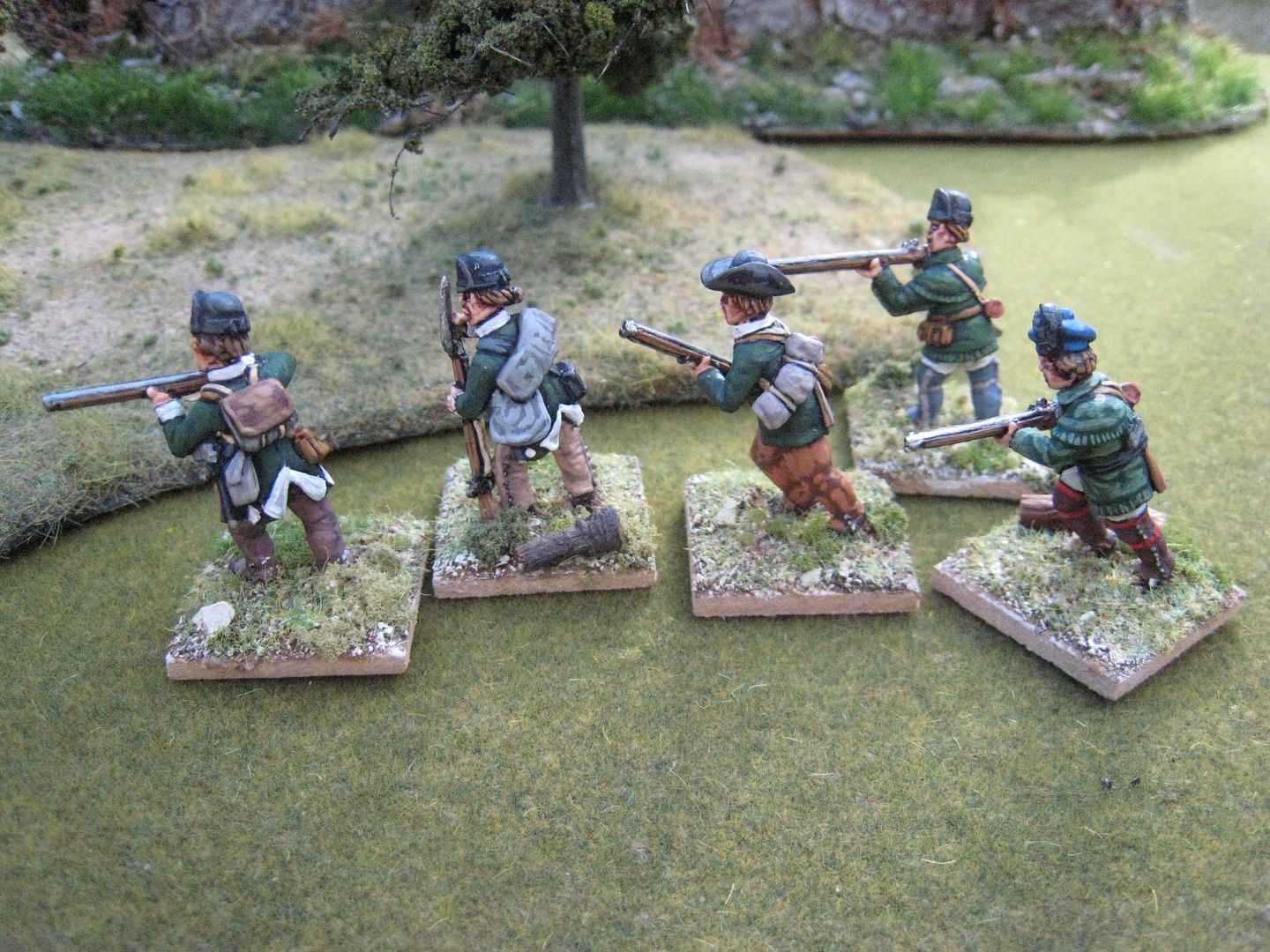Butler's Rangers earned notoriety for their participation, along with their Indian allies, in the "Wyoming Valley Massacre" of July 1778, so named because of the alleged killing and torturing of Patriot prisoners and the subsequent destruction of much property, and then the "Cherry Valley Massacre" of December 1778 which saw the killing of civilians as well as militia. The violent actions in the Mohawk Valley of loyalist units like Butler's Rangers and the Iroquois who had sided with the Crown prompted the Sullivan Expedition of 1779. George Washington's orders to General John Sullivan demonstrate the ferocity of the fighting in the region:
- But you will not by any means listen to any overture of peace before the total ruinment of their settlements is effected. Our future security will be in their inability to injure us and in the terror with which the severity of the chastisement they receive will inspire them."
I've designated these figures as "Butler's Rangers", but to be honest it's designed for use as generic Loyalist rangers in scenarios which call for such, like Oriskany, the Saratoga battles and Savannah, to give just 3 examples. The figures are King's Mountain Miniatures' Continentals with a variety of heads. I wanted the unit to have a high degree of uniformity but still have the look of some modifications for the field. Both the McGregor/Mollo and Smith/Kiley uniform books show Butler's Rangers in dark green hunting shirts, so I made up a couple of figures in that dress. Otherwise, I've modelled these figures according to this online article by Calvin Arnt. Most portrayals show the Rangers in dark green coats with red facings, and leather caps with a brass front. Arnt argues that the facings were most likely to have been white, not red. I'll not explain his reasoning here - the article in the link does so at length. As for headgear, Arnt doesn't like "jockey caps" and argues that the Rangers probably wore slouch/round hats and perhaps tricornes for the NCOs and officers. I decided, however, that I wanted to have a couple of figures in caps and so I used a variety of KMM heads. The caps here are KMM 10 but with the peak cut/shaved off. I didn't use brass-fronted caps because I've always been a bit suspicious of whether people who spent a lot of time sneaking around would wear something that would catch the sunlight. No doubt others object to Arnt's conclusions by I would emphasise that these are intended more for use as generic Loyalists (the "British Grenadier!" scenario for Oriskany, for example, requires 6 "rangers" in Butler's brigade - that unit can't be "Butler's Rangers" as the regiment didn't exist until later; but I'll use these figures). The two figures in hunting shirts could also be used as Patriots.
9 figures. Painted September 2016.





4 comments:
Interesting post, as ever, Giles and very nice brushwork on the Rangers.
Very nice unit. Well done
Peter
Giles, a couple of those are OMM mixed in with the Continentals.
Beautiful painting.
Not a fan of those bases at all.
I like them and I agree with your research. I think the brass fronted caps are a bit of an old wives tale that some have taken as fact. These are rangers, they would wear practical clothing to raid and scout. Look at rangers in the SYW.
Si
Post a Comment